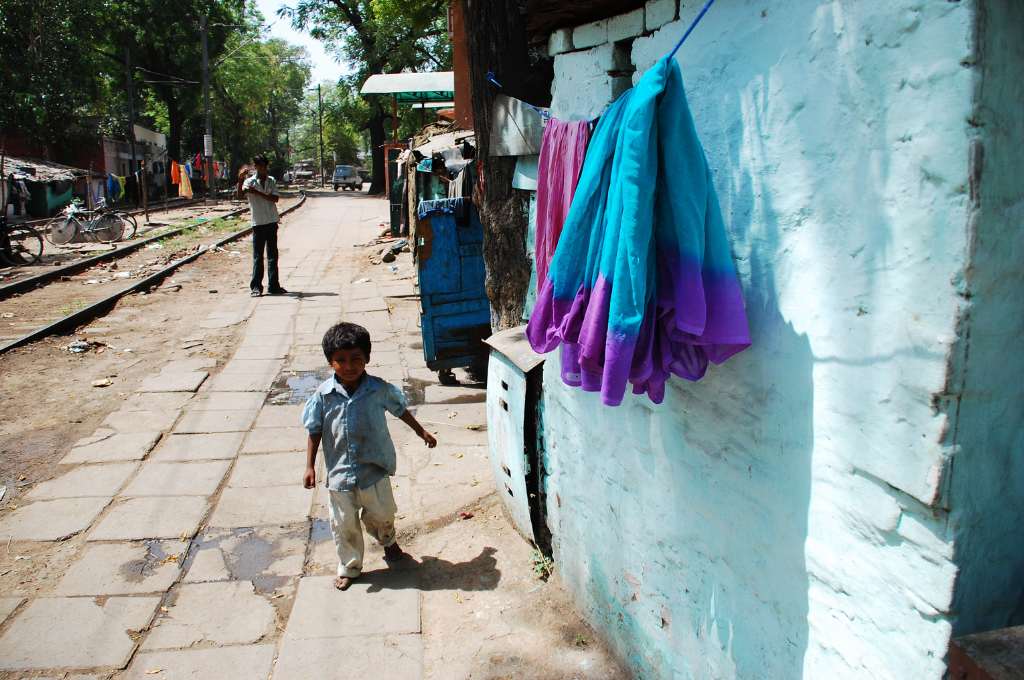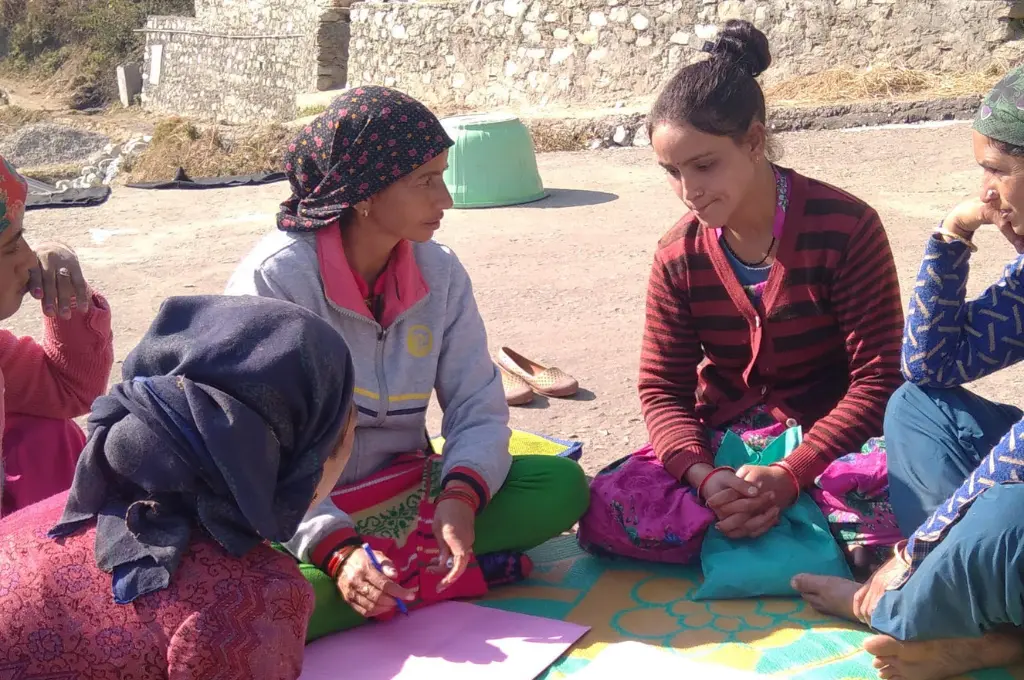India accounts for more than half of the total leprosy patients in the world. In 2023, the Indian government launched the National Strategic Plan (NSP) and Roadmap for Leprosy (2023–27) to achieve zero transmission of the disease by 2027. As part of the plan, the government is working on early detection of leprosy and prevention of Grade 2 disabilities, which include loss of limbs, severe skin cracks, and ulcers. However, the disease itself is only a part of the problem that people with leprosy experience; the stigma around leprosy prevents them from finding employment, housing, and education and accessing government benefits.
People with leprosy are often ostracised from society; this has given rise to leprosy colonies on the outskirts of cities. Currently, there are more than 750 such colonies in India, most of which are built on unused railway lands or on lands donated by individual philanthropists. Many of these colonies date back several decades and were built in reaction to social stigma and forced displacement. People have been living there for generations now. Although they have been able to forge communities and establish local governance systems, they still struggle for many necessities.
After working for approximately two decades across several leprosy colonies in India, Sasakawa-India Leprosy Foundation (S-ILF) has identified some primary challenges that these colonies face. Like other nonprofits supporting people with leprosy, we have had to change our approach in some cases as livelihood patterns shifted, the disease itself became less severe (as disability from leprosy has decreased over the years), and the younger generation got educated and demanded a better life. But there are certain issues that have remained the same.
1. Limited livelihood opportunities
Due to the stigma attached to the disease, even informal employment is a major challenge for people with leprosy. While the situation is worse for those with visible marks on their body, just belonging to the colonies makes the residents targets of discrimination. Until recently, the people from the colonies had difficulty finding opportunities for education, which meant that they had limited options for livelihoods. Many people with leprosy are forced to resort to begging.
Organisations working in these areas have found that livestock rearing, fishery, and other such activities that are usually common in rural areas are also popular here. However, over the years, we have seen a shift towards micro-entrepreneurship, which involves running grocery stores, beauty parlours, food carts, and shops for computer accessories. These businesses require lesser investment in skilling, and allow a self-sustaining, hyperlocal market to be built within the colonies; the residents being the customers also eliminates bias against the vendors. Nonprofits such as S-ILF help the people get loans and registration certificates and provide the entrepreneurs with training on accounting and other aspects of running a business.
Nonprofits and the government have partnered to create awareness against some common myths, such as leprosy being incurable.
The reduction in cases of Grade 2 disabilities has helped our work because there’s lesser discrimination when the society doesn’t see marks of leprosy on people’s bodies. Nonprofits and the government have also partnered to create awareness against some common myths, such as leprosy being incurable and spreading through touch. I remember, even a decade ago, when we would help vendors set up food carts on the borders of the colonies, we wouldn’t be allowed to use the full name of our organisation on the stalls because people worried that the word ‘leprosy’ would limit their customer base.
We also collaborate with government departments and nonprofits to educate the children in the colonies so that they have more income opportunities when they grow up.

2. Health, hygiene, and the cycle of leprosy
Many colonies don’t have the appropriate transportation and sanitation infrastructure in place. They lack pukka roads, toilets, clean drinking water, and proper nutrition, which leads to poor immunity that in turn increases chances of contracting the disease. Where toilets exist, they are in dire straits. This results in open defecation, which can potentially spread more diseases in the colony. In the settlements situated in rural areas, nearby fields can be used for defecation, but colonies in cities don’t have that option. This becomes particularly challenging for women and threatens to impact their reproductive health.
The location of the colony plays a key role in determining its condition. For example, the colonies on the outskirts of Delhi are better off because they have access to the government and receive regular funds and donations from individuals and industries too. But that isn’t the case for the large colonies in Purnea district in Bihar, and those in the Northeast. Nonprofits like ours have worked on solving issues such as malnutrition by providing balanced meals. We conduct workshops to introduce the colony to various government schemes related to pension, housing, health, and so on. This not only enhances the residents’ awareness but also gives them confidence to access their rights. We contribute to the well-being of the colony by distributing ration and helping with toilet renovations too.
3. Fear of displacement and rejection
The colonies on railway land were built at a time when land was more abundant. As resources become scarce, populations increase, and railways focuses on repurposing these lands, residents in many of these colonies live in fear of eviction. People are already receiving notices to clear the area and they can’t counter them because they don’t have the land deed that would legalise their claim.
There are still almost a hundred state-based and India-wide laws that discriminate against people with leprosy; these include laws that prevent them from finding employment in university bodies, limit their access to markets and public transport, and stop them from standing for municipal elections.
In many cases, the residents lack documents, including Aadhaar cards, since they exist outside the framework of formal society.
The National Human Rights Commission (NHRC) and nonprofits have frequently advocated for the removal of such biased laws. Moreover, organisations such as Association of People Affected by Leprosy, an initiative for and by people affected by leprosy, have been working on the ground for capacity building in the colonies so that the residents can recognise and fight for their own rights. Now, these colonies have a local governance system shaped like a village panchayat with elected leaders, who are also part of state-level committees; they help take the communities’ issues to the government, such as the need for better civic amenities like water and electricity.
In many cases, the residents lack documents, including Aadhaar cards, since they exist outside the framework of formal society; we work with the government to help them obtain these. We assist them in getting proper identity cards and acquiring land titles (pattas).
The changes and apprehensions
Since we started, we have seen a decrease in new cases of leprosy—from 1,25,785 in 2014–15 to 75,394 in 2021–22. This has also meant that there’s less conversation about the disease in mainstream media. But the nonprofits that were working in these colonies continue to do so.
There are residents now who don’t carry skin cracks, ulcers, or leprosy-related disabilities, which acted as obvious identifiers of the disease. Many young children in these colonies don’t even have leprosy. This changing situation has necessitated nonprofits like ours to focus on other aspects of the community’s challenges. For example, we work on providing education in the colonies by holding after-school classes and helping people get scholarships to study; many women from these colonies have found employment as nurses after studying on nursing scholarships.
The new generation has more aspirations, some of which can’t be achieved within the confines of the colonies. However, when they step out to nearby places for higher education, they still carry the stigma of leprosy and are looked down upon. Many young people prefer migrating with their families to faraway places where the stigma won’t follow them. Our job has now shifted to conducting skill-building programmes with them to support their ambitions.
The dip in the number of fresh cases has also meant that many funding organisations have diverted their focus from leprosy to other diseases such as HIV, cancer, and tuberculosis, which are considered more life-threatening now. During the peak of COVID-19 too, there was an urgent prioritisation of pandemic-related needs over leprosy. As a result many organisations are struggling for money to continue to do the work they had been doing. It is necessary for funders to realise that the battle against leprosy is only half won until we have also eradicated the stigma and rehabilitated the people into society.
—





